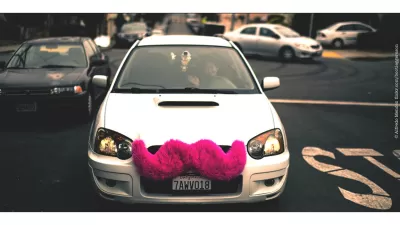Compiled from interviews conducted with city officials, this National League of Cities report gives us a regulator's-eye-view of the sharing economy. Among the topics discussed are equity, taxation, and data transparency.

The sharing economy and peer-to-peer commerce continues to evolve. Recently released by the National League of Cities, Cities, the Sharing Economy, and What's Next is an overview of that ongoing development from the perspective of established city officials.
From the report: "Of the 12 interviews conducted, four officials held positions as a city councilmember, four held positions in offices focused on economic development or special projects, two held positions in offices focused on transit or sustainability, and the remaining two served as advisors to councilmembers or to the city."
Several consistent themes emerged from the research, including:
- Ensuring equity and ease of access, especially in homesharing and ridesharing applications
- Insurance provisions for next-gen "taxi" services like Lyft and Uber
- How and when cities should have access to the data sharing economy companies collect
- What kind of taxes cities should levy on sharing economy transactions
FULL STORY: Cities, the Sharing Economy, and What's Next

Maui's Vacation Rental Debate Turns Ugly
Verbal attacks, misinformation campaigns and fistfights plague a high-stakes debate to convert thousands of vacation rentals into long-term housing.

Planetizen Federal Action Tracker
A weekly monitor of how Trump’s orders and actions are impacting planners and planning in America.

In Urban Planning, AI Prompting Could be the New Design Thinking
Creativity has long been key to great urban design. What if we see AI as our new creative partner?

Portland Raises Parking Fees to Pay for Street Maintenance
The city is struggling to bridge a massive budget gap at the Bureau of Transportation, which largely depleted its reserves during the Civd-19 pandemic.

Spokane Mayor Introduces Housing Reforms Package
Mayor Lisa Brown’s proposals include deferring or waiving some development fees to encourage more affordable housing development.

Houston Mayor Kills Another Bike Lane
The mayor rejected a proposed bike lane in the Montrose district in keeping with his pledge to maintain car lanes.
Urban Design for Planners 1: Software Tools
This six-course series explores essential urban design concepts using open source software and equips planners with the tools they need to participate fully in the urban design process.
Planning for Universal Design
Learn the tools for implementing Universal Design in planning regulations.
Gallatin County Department of Planning & Community Development
Heyer Gruel & Associates PA
JM Goldson LLC
City of Camden Redevelopment Agency
City of Astoria
Transportation Research & Education Center (TREC) at Portland State University
Jefferson Parish Government
Camden Redevelopment Agency
City of Claremont



























